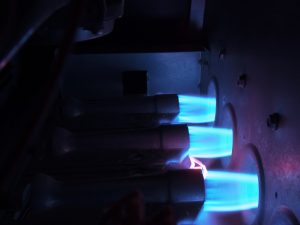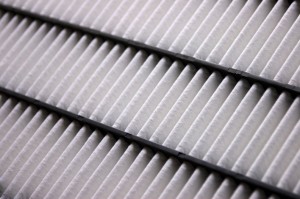 If you’ve had your furnace for a while, and you’re familiar with how it operates, it can be tempting to freak out if it suddenly begins to do something unusual. While there are certainly times when an unusual furnace behavior can indicate a serious problem, there are a number of different times when it’s not an emergency. You may still need to have the problem fixed (if it is a problem) but at least you’ll know that your system isn’t going to blow up any time soon.
If you’ve had your furnace for a while, and you’re familiar with how it operates, it can be tempting to freak out if it suddenly begins to do something unusual. While there are certainly times when an unusual furnace behavior can indicate a serious problem, there are a number of different times when it’s not an emergency. You may still need to have the problem fixed (if it is a problem) but at least you’ll know that your system isn’t going to blow up any time soon.
Saddleback Plumbing Heating & Air Blog: Posts Tagged ‘Furnace Maintenance’
Furnace Quirks That Seem Problematic, but May Not be
Monday, February 27th, 2017Why You Need to Replace Your Air Filter, and How to do it
Monday, February 13th, 2017 We’re going to go out on a limb and guess that you don’t change your furnace air filter very often. If you did, you probably wouldn’t be reading this blog about how to do it. If that assumption is correct, you should know that it is very important to change your furnace air filter every few months. If you don’t do this, you are actually making it easier for a fairly destructive set of problems to occur. Better to know how to change the air filter, and why you’re doing it.
We’re going to go out on a limb and guess that you don’t change your furnace air filter very often. If you did, you probably wouldn’t be reading this blog about how to do it. If that assumption is correct, you should know that it is very important to change your furnace air filter every few months. If you don’t do this, you are actually making it easier for a fairly destructive set of problems to occur. Better to know how to change the air filter, and why you’re doing it.
Electric Furnace Maintenance Tips from Turtle Rock
Monday, November 28th, 2011Electric heat is clean – but Turtle Rock homeowners pay for that cleanliness with high utility bills. Depending on the area of the country, electric bills can rival those of gas, oil, or propane. So it is only natural to assume that an efficiently running electric furnace is a must for homeowners who are looking to keep their energy costs down.
Electric furnaces are fairly simple machines. They use heating elements to warm the air, which is then distributed through the ventilation system via a fan or blower. The heating element is made up of a metal wire that is heated by normal electrical current. The element is used to warm or heat something, much like the function of an oven or toaster. Their operation is fairly simple – either they work or they don’t.
When a heating element fails it is usually because it is broken, bend, or misshapen. When that happens, it is time to replace it. You can do some preventive maintenance with a visual inspection of your heating elements. If your inspection does not reveal any problems, you can test the element for continuity. You should know how to use an ohmmeter to test it or ask a professional heating and cooling technician to check the elements for you.
Speaking of visual inspection, you can do a quick check for any frayed or damaged wires, which can be a source for wasted electricity, too. Another way to ensure that your electric furnace is running efficiently is to replace or clean your furnace filters on a regular basis. A clogged filter can make a furnace work harder and lead to premature mechanical failure.
And obviously, if the furnace is not working it is best to check for any blown fuses or tripped circuit breakers in the main electrical panel box. If you find one, make sure you replace it with another of the correct amperage.
Lastly, check to make sure the blower motor is operating correctly. You can have perfectly working elements but if the blower can’t push the warm air through your ventilation system, then all of the steps to ensure the electricity is working are for naught. You can usually hear a noisy motor or smell one that isn’t working improperly. Check it on a regular basis and check the fan belt for any damage or slippage, too.
Furnace Safety: Some Advice from Saddleback Plumbing
Wednesday, November 16th, 2011There are many advantages to a properly operating furnace; the most important are the safety and comfort of your Northwood home’s occupants. There are several things you can do to ensure the safe operation of your furnace.
Here is a checklist of ideas:
- Clean or change furnace filters on a regular basis. Replace disposable filters and clean permanent filters using water or cleaning solutions. Your owner’s manual or a qualified heating contractor can suggest a regular maintenance schedule.
- Check the exhaust vent from the furnace. Clear obstructions such as leaves, clothing, or animal nests from the vent pipe or chimney. Keep roof exhaust vents clear of snow. If there is a faulty exhaust system (like a blocked flue), of if there are cracks and leaks in the pipes or improper adjustment of the burner, or if there is lower air pressure indoors than outside, the furnace can create serious indoor air pollution.
- A clear air intake is important too, since furnaces need fresh air to “breathe” and complete the fuel burning cycle. Again, check for debris, snow, or animal nests in intake pipes.
- If you have an older gas furnace, you may want to install a supplementary induced-draft fan that reduces the possibility of backdrafting. Some furnaces have automatic shutoff devices that turn off the furnace if it begins to backdraft.
- Check internal components such as the blower motor and vacuum any dirt. Check belts and pulleys for excessive wear. You should consult your owner’s manual for any suggested maintenance tips on internal working components.
- You may also want to check the pilot light to see if it is working and if it producing an even, blue flame. If the flame is uneven, it may be a sign of incomplete gas combustion, which can result in the creation of dangerous carbon monoxide gas.
- Ensure that your thermostat is operating correctly by raising or lowering the temperature settings to make sure the furnace cycles on and off.
- Install and maintain battery or hard-wired smoke and carbon monoxide detectors.
Externally vented natural gas furnaces, when properly designed and installed, will operate safely for years. But if you detect a problem, use the most common solution – contact a qualified heating professional to check out your furnace.
Steps to Take Before Turning on Your Furnace: A Guide from Aliso Viejo
Friday, November 4th, 2011You are feeling a chill in the air in Aliso Viejo. The outside temperatures are going down each day and the nighttime temperatures are forcing you to break out the flannel pajamas, robes, and blankets. It’s getting cooler and you are holding off turning on your furnace for the first time of the season, maybe because you envision high utility bills or you are afraid of what you’ll hear, feel, or see coming from your furnace after several months of inactivity.
There’s not much you can do to control higher utility bills, they are like death and taxes. But there are some things you can do to take the “mechanical anxiety” out of turning on your furnace for the first time.
You can’t go back in time but you may want to consider “summerizing” your furnace after you shut it down in preparation for the cooling season – or during the cooling season. Have a qualified heating and cooling technician give your furnace an inspection and cleaning.
A preseason inspection and cleaning will prevent some problems that may affect some of your senses later on. For example, a smell coming from your furnace may indicate a burning or smoldering electrical component. A noise may indicate a noisy fan or a loose belt, causing poor or no airflow. Touching your ventilation system and feeling for any vibration can indicate poor airflow. Visually checking your instruments like thermostats for verifying proper temperatures or a digital readout on our carbon monoxide alarm for any traces of harmful gas are also important to furnace start-up.
If something goes wrong, don’t blame it on your thermostat or the cold weather; blame it on a lack of preventive maintenance. Your best bet is to have a qualified service technician do a clean and inspection – to minimize any surprises at start-up and to keep you and the occupants of your home comfortable and safe while your furnace begins another season of hard work.
Sources of Carbon Monoxide
Monday, October 24th, 2011The risks of carbon monoxide have been well documented for years, and everyone in Coto de Caza knows how dangerous it can be. It can be fatal at high concentrations, but even in low levels it can be poisonous enough to make you sick.
What you may not know is that there are many sources of carbon monoxide, also known as CO. This poisonous gas is formed by any incomplete combustion process. Since combustion is not 100% efficient, that means carbon monoxide is released any time something burns.
To be more specific, here are some examples of carbon monoxide sources you might encounter around your house:
- A furnace or chimney can leak exhaust gases, including CO, into the home if it has been improperly sealed or vented. For example, if the chimney has a small crack in the flue that goes unnoticed, CO from the fireplace can be vented back into the house.
- A furnace supplied by an under-sized gas line will often burn the gas at a sub-optimum temperature. The result is incomplete combustion of the gas, which means a source of CO.
- Old, dilapidated or poorly maintained heating systems are a big culprit. Often the seals or fittings are loose on these units, causing CO to leak out of them and into your house. Or they may not burn fuel as efficiently as they used to, so carbon monoxide is more readily released.
- Using machinery, like a propane generator or a gas-powered saw, in a poorly vented garage can be very dangerous. Sometimes people don’t think about this one because the garage is large enough that it seems to be ventilated better than it is.
- There’s a reason that barbeque grills are labeled for outdoor use only: they release a lot of carbon monoxide. Both charcoal and propane grills should only be used outdoors, and you should avoid the smoke from charcoal in particular as much as possible.
- Smoking tobacco releases carbon monoxide into the air, along with other potentially dangerous gases.
There are plenty of other sources, as well, but those are some common ones. To protect yourself and your family, make sure any areas where combustion occurs are well-ventilated, keep your HVAC equipment well-maintained and in good repair and invest in a home CO detector. They are inexpensive, and many are combined with a smoke detector, so you only need to buy one unit.
